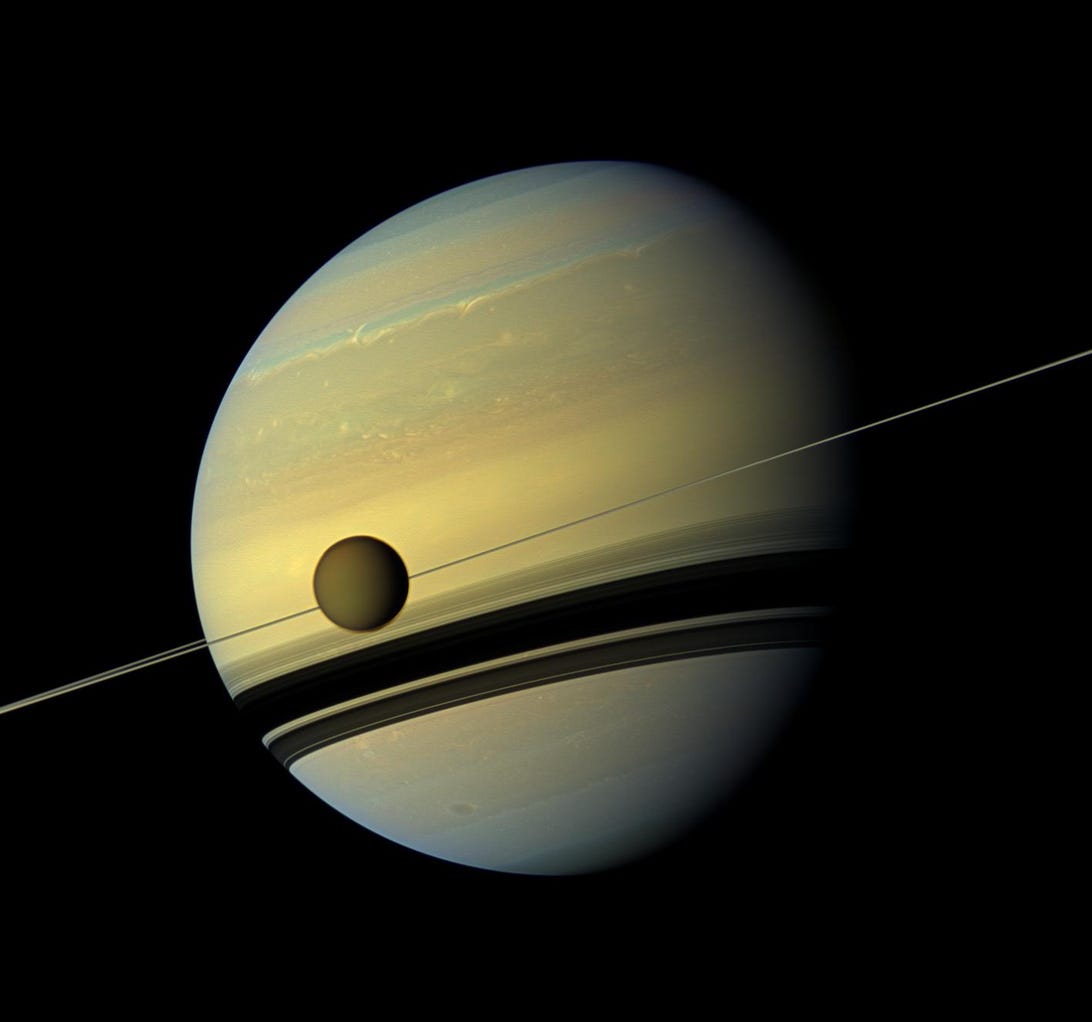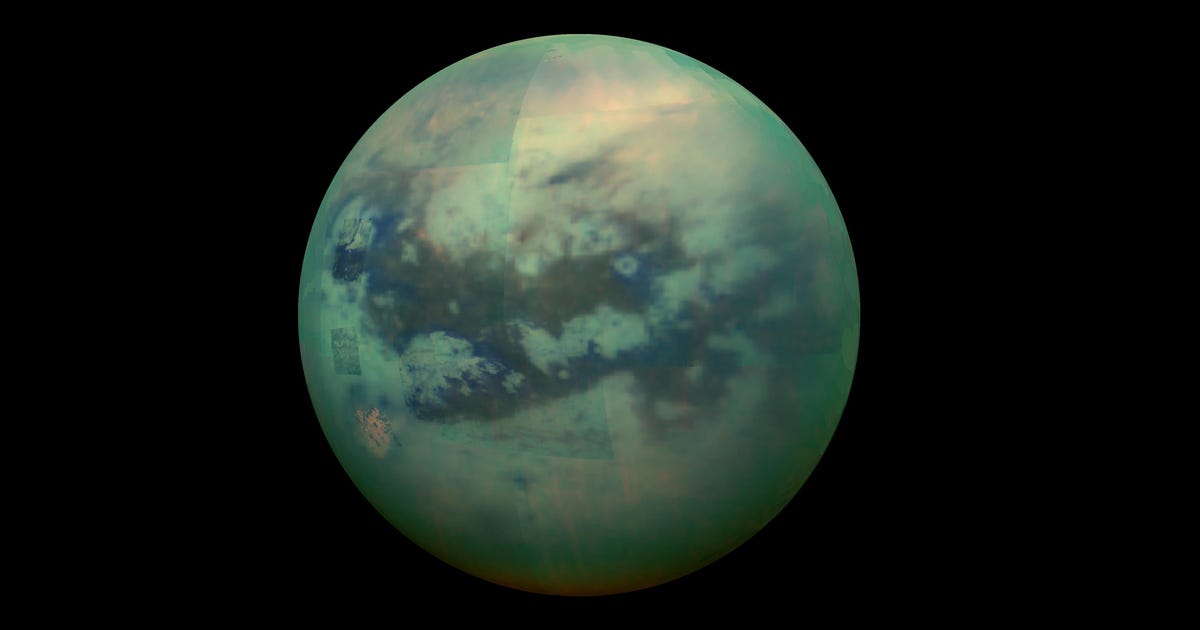Roughly a billion miles from where you’re sitting, lingering near Saturn’s rocky rings, is a moon decorated with lush lakes and rivers. In its sky, there are clouds, on its land, organic molecules. Enveloping the orb is a dense atmosphere. It’s one of the most Earth-like worlds ever discovered, and thus a prime place to hunt for alien life. We call it Titan.
I say “Earth-like,” though, because while Titan mimics the features of our planet, it’s more of an alternate reality Earth.
The flowing bodies of liquid on Saturn’s icy moon, for example, are filled with methane instead of water. If we dipped into a methane lake, we’d pretty much burn up. If we drank out of it, we’d suffocate. But that’s because our bodies have Earth-based chemistry. Other types of life, however weird, could potentially live in such conditions — extraterrestrial beings don’t have to look like us in the slightest, and, well, they probably don’t. Even life on early Earth was strikingly different from what we see today.
In search of such strange Titan-esque lifeforms, a crew of scientists modeled the moon’s wacky environment to better understand how it works, arguing that we need to know about Titan’s landscape history before picking out where aliens might reside. They published a paper on their research this month in the journal Geophysical Research Letters.
More specifically, they studied the way sedimentary processes — various ways land can change over time — could’ve led to Titan’s caves, canyons and sand dunes.
“If we understand how the different pieces of the puzzle fit together, and their mechanics, then we can start using the landforms left behind by those sedimentary processes to say something about the climate or the geological history of Titan — and how they could impact the prospect for life on Titan,” Mathieu Lapôtre, a geologist at Stanford’s School of Earth, Energy & Environmental Sciences, said in a statement.

Radar imaging from a Cassini flyby on July 22, 2006, show evidence for large bodies of liquid on Titan. The lakes are the dark parts.
NASA/JPL-Caltech/USGS
On Earth, sedimentary processes easily explain where our landforms come from. Rocks erode into little sand grains, winds carry those bits to certain regions, all the sand piles up, and soon, there are piles that eventually turn into some landform. Simple. Intuitive.
But on Titan, the biggest of Saturn’s 82 moons, it’s more complicated. The origin of its landforms is sort of a mystery because Titan sand grains aren’t like Earth grains. They’re weaker, in a sense, and expected to be more fleeting.
“As winds transport grains,” Lapôtre said, “the grains collide with each other and with the surface. These collisions tend to decrease grain size through time. What we were missing was the growth mechanism that could counterbalance that and enable sand grains to maintain a stable size through time.”
That is, if Titan grains start disappearing with the wind, how could they ever compound into proper landforms like those we see on the moon?

In this image, you can see Titan against Saturn. This massive moon is about 50% wider than ours.
NASA/JPL-Caltech/Space Science Institute
In short, after modeling Titan’s landscape, the researchers found that the moon exhibits a special type of sedimentary process called sintering, which means neighboring grains smash together and fuse into a bigger, stronger piece that’s less destructible by wind.
“We were able to resolve the paradox of why there could have been sand dunes on Titan for so long even though the materials are very weak,” Lapôtre said.
Plus, beyond that, Lapôtre and fellow scientists also used their models to uncover many other details about Titan’s geologic distribution. Here are a few:
The moon’s winds seem stronger near the equator, which suggests there are more sand dunes around there. These same gusts teeter off toward mid-latitudes nearby, which suggests flatter lands around the dunes. In these lower-ground areas, the researchers also predict sintering creates super coarse grains, which could explain the bedrock that make up Titan’s plains.
“We’re showing that on Titan — just like on Earth and what used to be the case on Mars — we have an active sedimentary cycle that can explain the latitudinal distribution of landscapes through episodic abrasion and sintering driven by Titan’s seasons,” Lapôtre said. “It’s pretty fascinating to think about how there’s this alternative world so far out there, where things are so different, yet so similar.”
